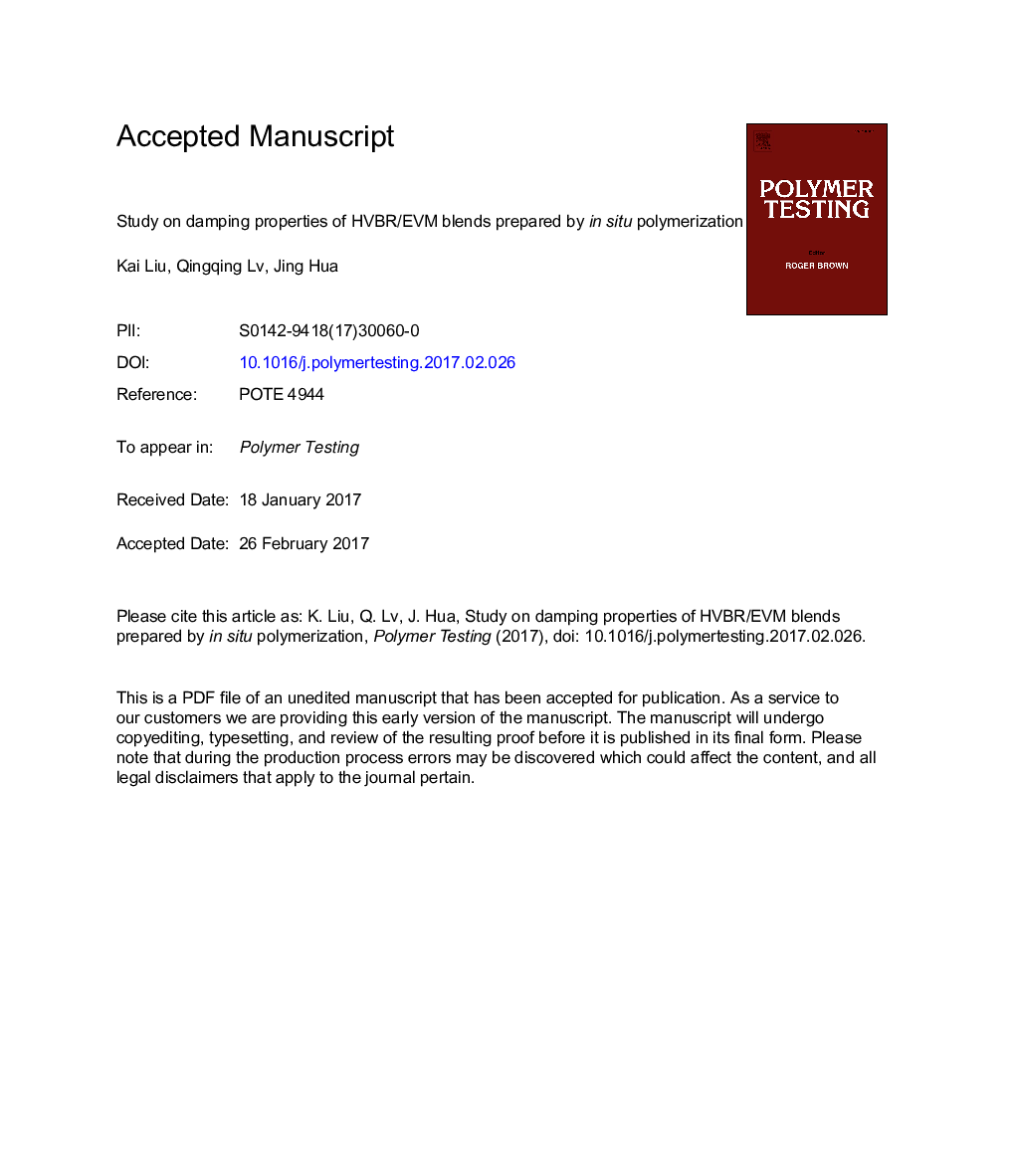| Article ID | Journal | Published Year | Pages | File Type |
|---|---|---|---|---|
| 5205452 | Polymer Testing | 2017 | 14 Pages |
Abstract
In comparison with normal damping rubbers such as natural rubber (NR), styrene butadiene rubber (SBR), isobutylene isoprene rubber (IIR) etc., Mo-based high vinyl polybutadiene rubber (HVBR) with high loss factor, excellent aging resistance and glass transition temperature closer to room temperature, is a promising damping material. The effective damping temperature range of HVBR could be further broadened by blending with ethylene-vinyl acetate (EVM) and the effects of blending methods (in situ polymerization blending or mechanical blending) and blending ratios on the damping properties and physical properties of HVBR/EVM blended rubber were studied. HVBR/EVM in situ polymerization blends was prepared by butadiene coordination polymerization by Mo-base catalyst in a toluene solution of EVM. The results of dynamic mechanical analysis (DMA) and scanning electron microscopy (SEM) of the blended vulcanizates via in situ polymerization blending revealed that the compatibility between HVBR and EVM was improved compared with that of the blended vulcanizates via the traditional mechanical blending method. The two phases of HVBR/EVM in situ polymerization blends had good dispersion and uniformity, the damping temperature range was significantly expanded, and the peak and valley of the damping temperature range were greatly improved. A blending ratio of HVBR/EVM900 = 100/40 showed the best damping properties and the effective damping temperature range (tanδ>0.3) was extended from â6.6 °C to 39.4 °C.
Keywords
Related Topics
Physical Sciences and Engineering
Chemistry
Organic Chemistry
Authors
Kai Liu, Qingqing Lv, Jing Hua,
